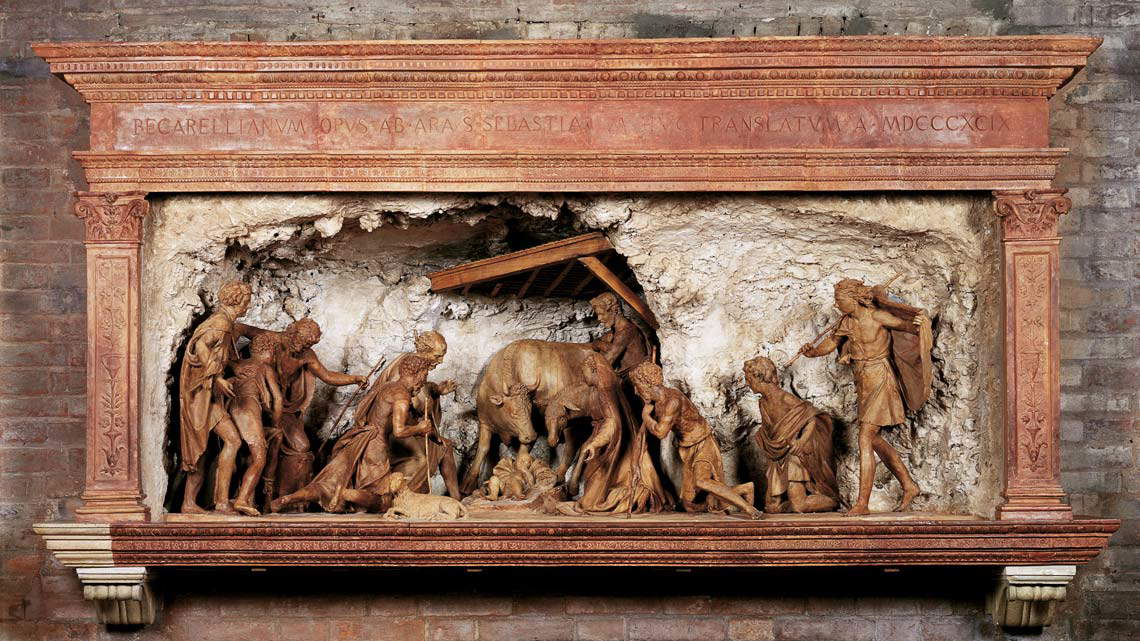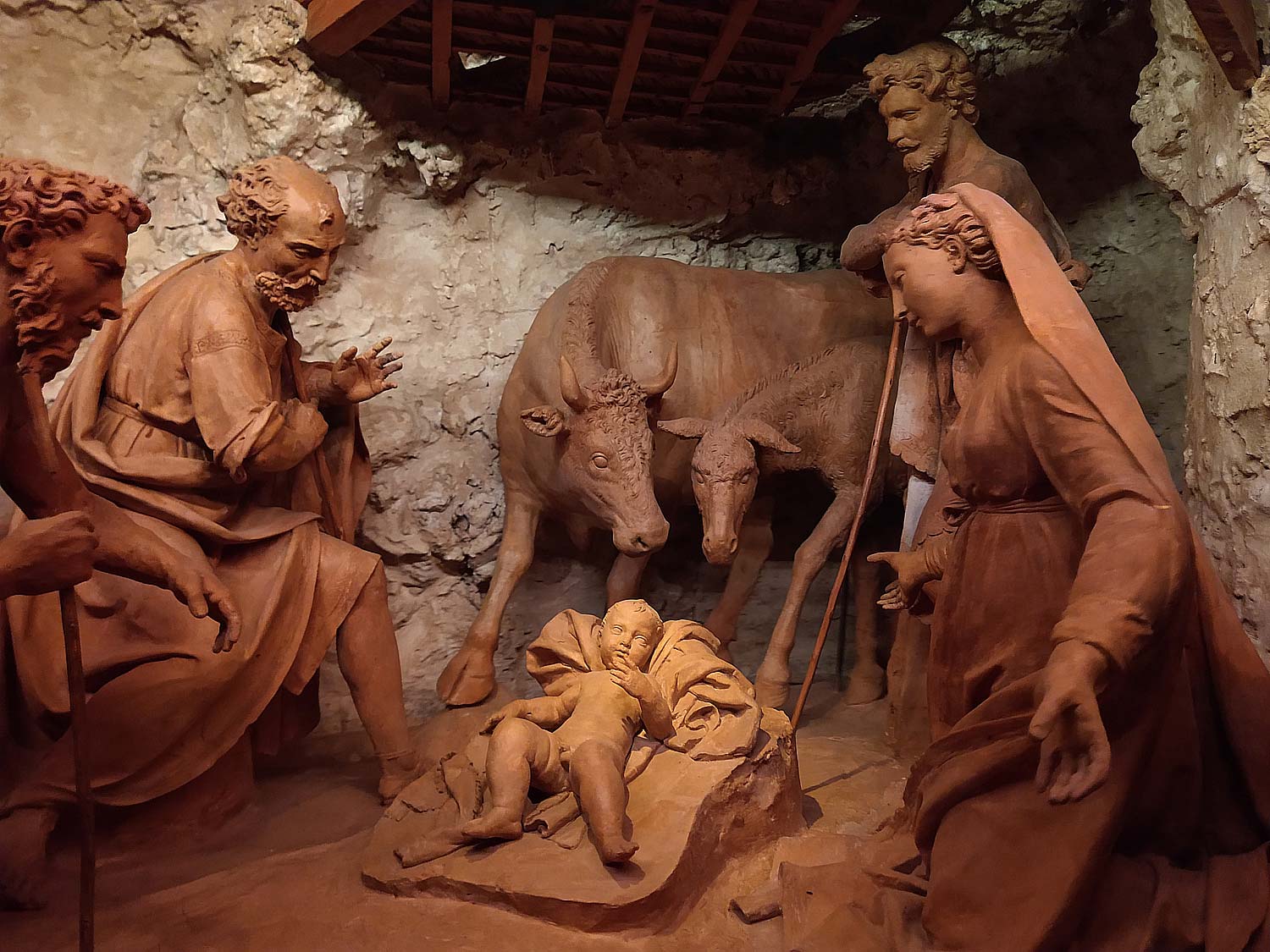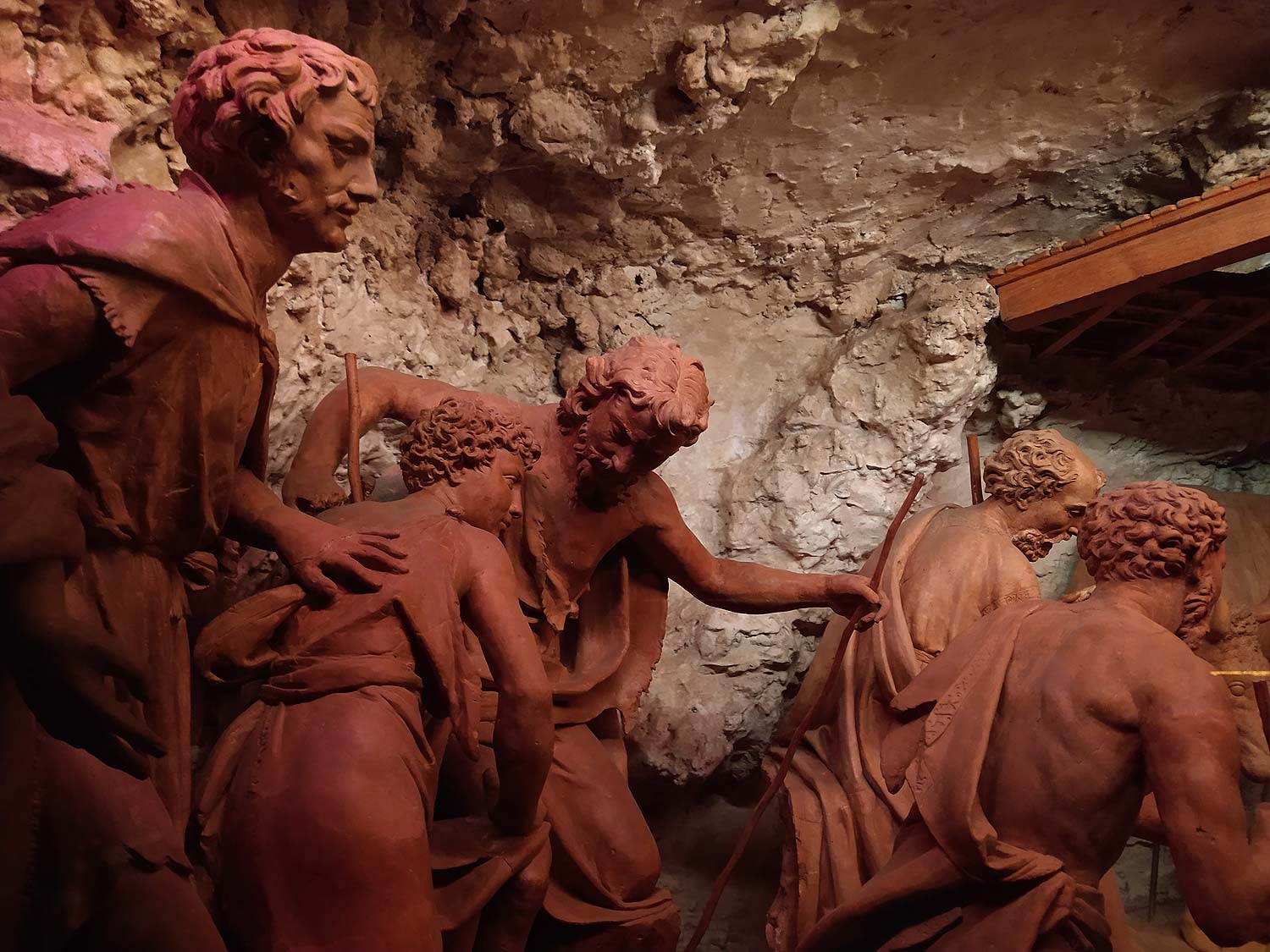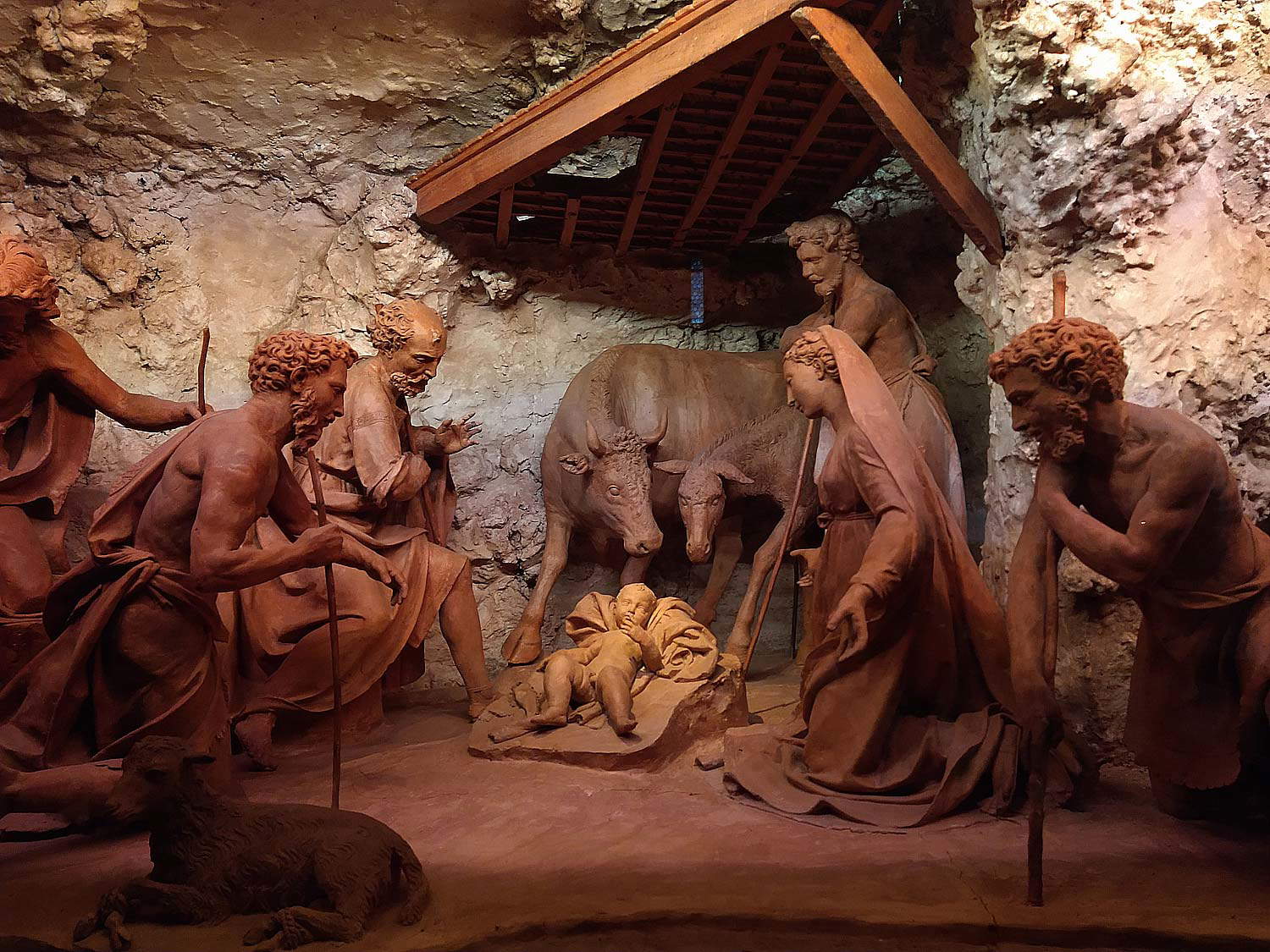It is not easy to make a nativity scene, wrote Dino Buzzati. It is a “job that may seem like a game and is instead charged with seriousness and mystery,” a job not suitable “for mothers,” because it “requires skill organizational skills, technical ingenuity and a burst of imagination, qualities that are precipitously masculine,” he stated in his article on the “nativity scene technique,” published in the Corriere della Sera in 1934. Other times. And while today we can establish with certainty that organization, ingenuity and imagination are undoubtedly unisex qualities, it is still possible to agree with Buzzati that setting up a nativity scene is anything but a simple operation: it takes inventiveness to make a homemade nativity scene, so let alone what professionalism is needed to put up, Buzzati wrote again, “nativities for a church, or for a Christmas showcase, or for a patrician palace theater, precious with eighteenth-century figurines.” For confirmation, it would be necessary to ask Antonio Begarelli, an early 16th-century sculptor from Modena, among the greatest ever masters of terracotta, and author of one of the most beautiful nativities to be admired in an Italian church: his is the Nativity scene in Modena Cathedral, a work made in 1527, when Begarelli’s career was still in its infancy.
The first to give mention of Begarelli’s nativity scene is Tomasino Lancilotto, in his Chronicle of Modena , which reports day by day the events of the city from 1503 until 1554. Lancilotto’s work was constant, long and meticulous: in fact, we are not speaking of a compendium, but of a systematic chronicle, a daily account of fifty years of the city’s history, to which Lancilotto devoted five decades of his life, finishing the work a month before his death. Here: on the date of April 20, 1527, we read in Lancilotto’s Chronicle : “M. Antonio de Zulian Bregarelo ha fato el presepio che è soto la ancona di San Sebastian in Domo, et posto in dito loco.” Today we no longer see Begarelli’s nativity scene in its original location (in fact, we can admire it in the right aisle of Modena Cathedral, but still close to the altarpiece of San Sebastiano, a masterpiece by Dosso Dossi, for whom in ancient times the’Begarelli’s work served as a singular and unusual predella), but it is significant that the terracotta figurines, in five centuries of history, have never left their home, the city’s most important house of worship. To be sure, some details are no longer the original ones: the most substantial intervention, that of the Carrarese sculptor Giovanni Lazzoni, called in to restore the ensemble in 1669, led to the replacement of rather extensive pieces. As art historian Giorgio Bonsanti has reconstructed, the hands of the Madonna and St. Joseph, the arms and left leg of the third shepherd from the right, the arms of the kneeling one in the foreground on the left, and then again, on the first shepherd on the left, the head, arms, and right leg can be traced back to Lazzoni’s restoration. The sheep, on the other hand, is the work of Modenese sculptor Luigi Righi, who restored Begarelli’s group in 1844.

 Antonio Begarelli, Nativity
Antonio Begarelli, Nativity Antonio Begarelli, Nativity
Antonio Begarelli, Nativity Antonio Begarelli, Nativity
Antonio Begarelli, NativityToday we see the figurines in the natural color of terracotta, to which they have recently been restored following the 1976 restoration that removed the white repainting of the figures, but we know that originally the figures were to appear precisely in the color of marble, with gilded trim, to make them look more luxurious: it has long been established that in March 1527, a month after firing, Begarelli had received a payment “to whitewash the figures of the crib.” The whiteness of the figurines, however, was no longer the original: restorations and repainting had altered the facies of the crib, eventually blurring the fine modeling of the figures. We speak, after all, of a work of supreme finesse and delicate elegance. And certainly, thinking back to Buzzati, it must not have been easy for Begarelli to organize a set of as many as thirteen statuettes of half a meter each (the eight shepherds, the Child, the Madonna, St. Joseph, the ox and the donkey) that not only respected a well-balanced position, but also dialogued well with the St. Sebastian Altarpiece, thus diligently carrying out its task of unusual predella, and with the context of Modena Cathedral. We are not certain of the arrangement the statuettes were originally intended to follow, but we can reasonably believe that the present configuration is not far removed from what Begarelli imagined: the result is a balanced, graceful and at the same time animated ensemble, as suggested by the group of shepherds kneeling from the left, on whose faces one can clearly read surprise, amazement before the happy event, and the shepherd who arrives from the right at a quick pace, almost as if he has realized he is late and has therefore hurried his way. These inserts, which light Begarelli’s nativity scene with life, do not, however, undermine its elegance: if one has to think of a counterpart in painting, one might think of Correggio’s Nativities , their joyful delicacy, the freedom with which Allegri reread and interpreted Raphael’s lesson. The Correggio component, for that matter, had already been well noted by Adolfo Venturi: “it seems that all of a sudden a vivid, joyful breath bursts into Begarelli’s slow art, the vein of capricious grace that Antonio Allegri had brought forth from the soil of Emilia.” A capricious grace that allowed Begarelli to transform, Venturi was convinced, “the shepherds into unleavened gentlemen, the nativity scene into a gathering of Arcadians.”
To compose a nativity scene such as the one in Modena Cathedral thus required all the refinement of a classical sculptor, who looked to Raphael, in the years when the culture of Urbino was asserting itself in the cities of the Po Valley, to attenuate the naturalist lesson learned from observing the works of another extraordinary interpreter of terracotta, his fellow citizen Guido Mazzoni. The Nativity Scene in Modena Cathedral is then the only work with small figures by Antonio Begarelli, but the fact that the artist works here on small-scale sculptures, and on an iconographic subject more congenial to a domestic composition than to a predella, however unusual, should not lead us to imagine a naïve Begarelli: far from it. "In the Nativity,“ Giorgio Bonsanti has written, ”there are numerous components, if we read well, that inform the artist’s interests and updating to this era. Some of these interests come from afar, from the classical world, and recall the Roman experience that has been reasonably postulated. The direction is here, and on other occasions, rather toward the Hellenistic than the classical world: the shepherd bursting in from the right, for example, hints at the new freedom with which a new naturalness was being discovered and explored in that context."
A free, graceful and Hellenistic nativity scene, the work of one of the finest sculptors of his time, it was originally meant to look similar to that of Federico Brandani in the Oratory of San Giuseppe in Urbino, who was also a keen observer of Correggio’s painting: you don’t often see that, inside a church. So much so that all the guidebooks in Modena cannot help but mention it as one of the most beautiful “permanent nativity scenes” in the area. A nativity scene that is surprising, finally, for its simplicity. Buzzati had dusted off an old handbook on nativity scenes that recommended leaving aside extravagance. To dispute it, however: on the “gentle ritual” of the nativity scene should not weigh norms and rules, the writer said. It’s true: everyone will make his or her own nativity scene as they see fit, even putting in lions and giraffes if they want, and the result doesn’t necessarily come out bad. Often, however, the most interesting and surprising solutions are precisely the most measured ones. In nativities, as in everything. And Begarelli’s masterpiece is there to prove it.
Warning: the translation into English of the original Italian article was created using automatic tools. We undertake to review all articles, but we do not guarantee the total absence of inaccuracies in the translation due to the program. You can find the original by clicking on the ITA button. If you find any mistake,please contact us.